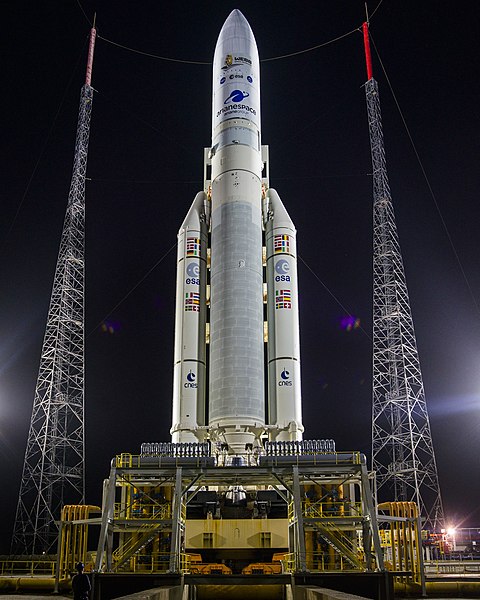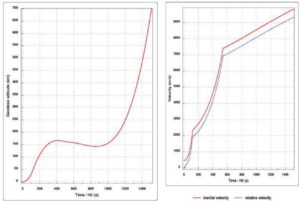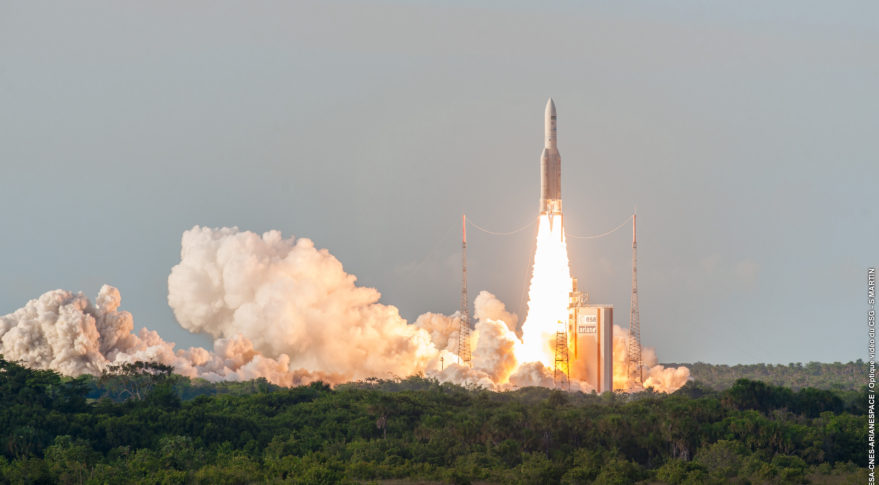In this article we will use our knowledge to take a look at a case example of the European Ariane 5 launch vehicle.

Ariane 5 is a heavy lift launcher pictured at the launch pad in figure 1. It can launch a payload of up to 20 000 kg satellite to low Earth orbit and 10 500 kg to geostationary transfer orbit. Its height is up to 52 meters and a weight of approximately 777 metric tons. It consists of one cryogenic liquid fueled core first stage with two solid boosters on the side, and an upper stage. Each of the two solid boosters have a thrust of 7 080 kN while the first core stage has a thrust of 1 015 kN. This means that the boosters accounts for about 93 % of the total thrust before being released. After about 142 seconds the boosters are separated and the core first stage is providing all the thrust. After about 537 seconds at around 158 km of altitude the core first stage is separated. The upper stage ignites four seconds later. The burn time of the upper stage is specific to the mission. Ariane 5 can have multiple payloads which are released at specific times depending on the intended orbit.

The figure 2 to the right shows the altitude and velocity of the Ariane 5 launch vehicle as a function of time, as well as absolute and relative velocities.The relative velocity is the speed as seen from the launch site of Kourou. But since Kourou is located near the equator and the Earth spins around itself, the launcher already has a speed of about 500 m/s as seen from a background reference frame! The closer you are at the equator the more «free» velocity you gain, so this means that you can carry heavier payloads to higher altitudes than if the rocket was launched from higher latitudes.
All large rockets, including Ariane 5, are launched in an upright direction pointing towards zenith. Usually in the first tens of seconds after launch, the rocket will roll so that the launch vehicle points in the direction it will launch into and do a small pitch manoeuvre called a gravity turn. After making this small adjustment in pitch angle, often much less than 1 degree, the gravity will slowly decrease the pitch angle of the vehicle making it point more and more horizontally. This is an optimal trajectory, and the pitch angle adjustment is carefully calculated. No thrust is used to pitch over further, so all the thrust is used to increase the speed of the vehicle and only that. Also, a launch vehicle is always very mechanically strong in the travelling direction to withstand the drag forces, but usually weak in the perpendicular direction to save weigth (one example is the SpaceX Falcon 9, which is extremely thin compared to its height). Making a gravity turn makes sure that the rocket has zero angle of attack, and hence the perpendicular forces are close to zero.
See the launch of BepiColombi on an Ariane 5 here:

<< Previous page – Content – Next chapter >>
This article is part of a pre-course program used by Andøya Space Education in Fly a Rocket! and similar programs.
